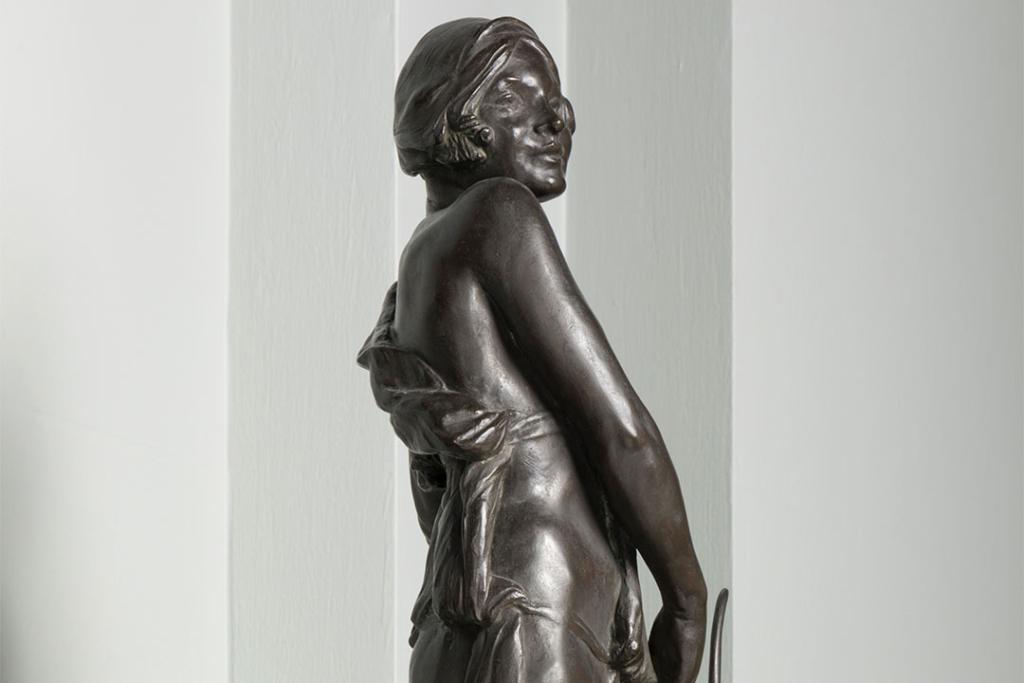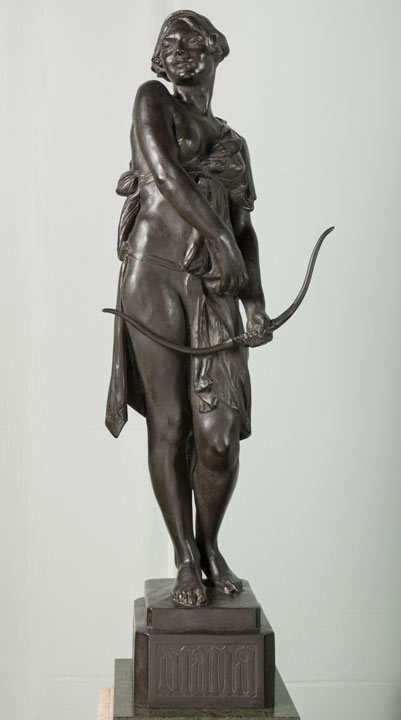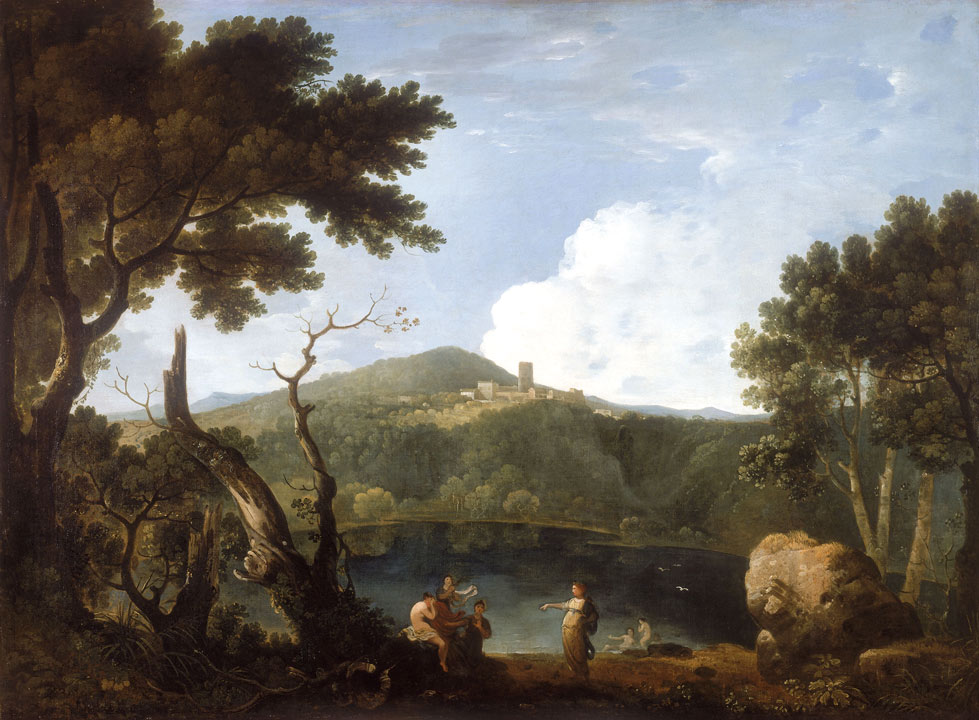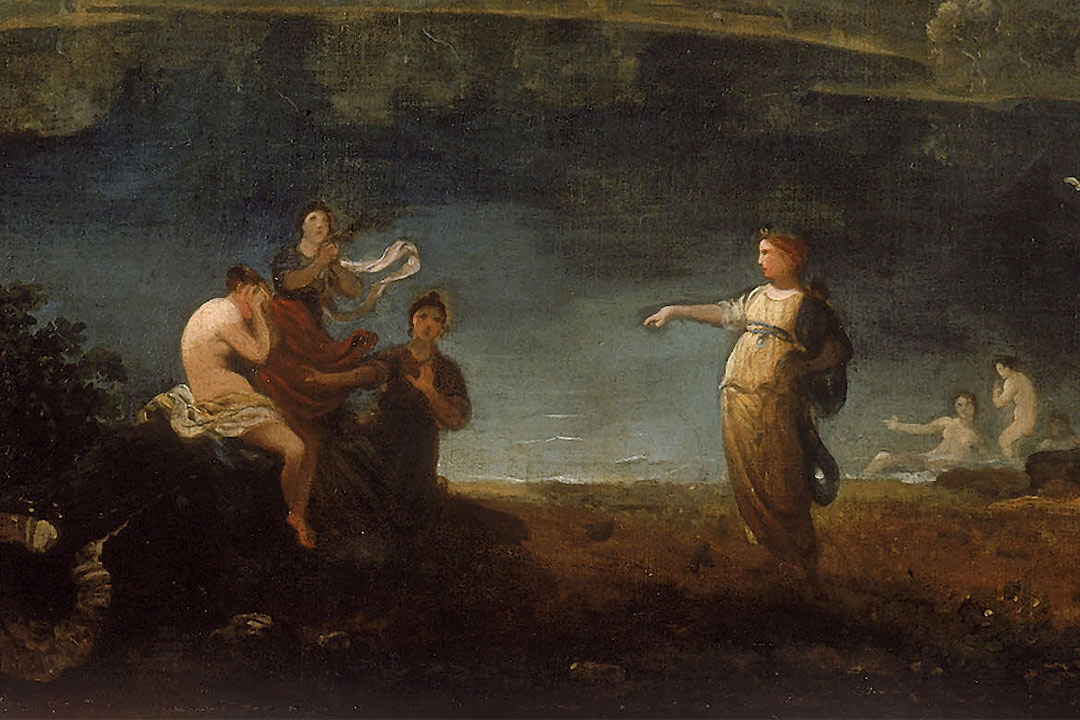Diana, Goddess of the Chase
Stories of LGBTQ+ relationships can be traced back to ancient mythology and the gods and goddesses whose tales were told to inspire. Associated mainly with hunting, childbirth, chastity and purity, the goddess Diana might not appear at first to be part of LGBTQ+ history. However her relationship with her female companions, as portrayed in artworks in the Lady Lever Art Gallery, has resonated with many women throughout history.

At first glance, the bronze statue made in 1929 by the sculptor Gilbert William Bayes appears to depict a young woman of athletic build, with the fashionable bob hairstyle of the 1920s, preparing to draw a bow. A female archer would not have been unusual in the 1920s, the sport of women’s archery was by then very well established and had first appeared in the modern Olympic Games in 1904.
Similarly, by 1929 a female athlete wearing a dress which exposed her legs would also not have been unknown, although only seven years previously the great French tennis player Suzanne Lenglen caused a stir at the tournament at the All England Lawn Tennis Club in Wimbledon by competing in a calf-length dress. On approaching the statue, however, the viewer notices that the woman is semi-naked, her right breast and leg being uncovered, and she is barefoot. Her identity is revealed by the inscription on the base of the statue as ‘Diana, Goddess of the Chase’.

Diana, Goddess of the Chase by Gilbert William Bayes
Diana was a goddess revered by several of the Latin peoples living in the central part of the Italian peninsula in the first millennium BC. She was associated with the moon, but also acquired the attributes of the earlier Ancient Greek goddess Artemis, a deity primarily associated with hunting, depicted in art with a bow and often accompanied by a hunting dog or animal prey. Early literary references to Artemis in Homer’s Odyssey emphasise her athleticism, a characteristic evident in Bayes’ statue. Also in the Odyssey, Artemis is accompanied by female companions described as ‘nymphs of the hills’. Ancient authors also indicate that Artemis was a virgin and that her female companions also remained virgins. However, what was the relationship between the goddess and her companions?

Landscape with Diana and Callisto by Richard Wilson
A painting in the collection of the Lady Lever Art Gallery, Landscape with Diana and Callisto, painted by the Welsh artist Richard Wilson, may reveal more about Diana’s relationship with her female companions. Wilson was a landscape painter from Wales, who worked in Italy from 1750 to 1757 to satisfy the desire of ‘Grand Tourists’ to purchase paintings of Italian scenes as souvenirs of their travels.
Wilson intended that the location for Diana and Callisto should be interpreted as Aricia in the Alban Hills south-east of Rome, the site of a significant sanctuary to Diana in the Roman period. The lake depicted in the background would accordingly be Lake Nemi, also known as the Speculum Dianae (the Mirror of Diana). The title characters are prominent in the main scene; Diana is the figure standing on the right and Callisto is the seated figure, part-naked, in a state of distress. So, who was Callisto and what was the cause of her distress?
Several Roman authors recount that Callisto, whose name means ‘beautiful’, was Diana’s favourite among her group of companions. Callisto was so beautiful that she attracted the attention of the Roman god Jupiter, Diana’s own father. Jupiter caught sight of Callisto and was overcome with lust. To win her trust and seduce her, Jupiter assumed the appearance of Diana.
The result of the encounter was that Callisto became pregnant, which was revealed when Diana encouraged her companions to undress and bathe with her. Callisto was understandably unwilling, with the result that her companions removed her clothing, revealing her pregnancy. It is Diana’s anger at Callisto’s betrayal and Callisto’s distress at her imminent exclusion from the group of women which is depicted by Wilson in the painting in the Lady Lever Art Gallery’s collection.

Detail from Landscape with Diana and Callisto by Richard Wilson
In the story Jupiter's successful strategy of appearing as Diana suggests that Callisto was open to seduction by a woman, particularly Diana. Another strand to the story could be Diana’s insistence on her companions remaining virgins. It is plausible that Diana wished her companions to share the same sexual preferences as herself, namely lesbian relationships.
Images of the goddess Diana in the collections of the Lady Lever Art Gallery, and the stories they portray, serve as an interesting counterpoint to the lives of women in the past. In Ancient Greece and Rome, women seeing images of Artemis or Diana, or discovering stories about her through the writings of classical authors, would see a woman and her companions leading a very different life to what society expected of them in terms of sexual relationships.
In later centuries, other women have seen Artemis or Diana as a model for their own lives, where they aspired to live independently of male influence and companionship and be free to enjoy same-sex relationships in freedom and without restriction.
